Nội dung
- 1. Overview of wastewater treatment system operation process
- 2. Sequence in the operating process of factories and wastewater treatment plants
- 3. Maintenance of wastewater treatment system
- 3.1. Check and clean the filter system
- 3.2. Pump maintenance
- 3.3. Check the electrical cabinet system and control electrical system
- 3.4. Maintenance of tanks and biological treatment tanks
- 3.5. Inspection and maintenance of mechanical equipment
- 3.6. Check the sludge discharge system
- 3.7. Check the quality of the output water
- 3.8. Lập kế hoạch bảo trì, bảo dưỡng
- 3.9. Operating Instructions
- 4. Experience with incidents when operating wastewater treatment systems
1. Overview of wastewater treatment system operation process
1.1 Wastewater treatment system operation techniques
Wastewater treatment system operation techniques are very important in ensuring the safety and efficiency of the treatment process. The operating instructions focus on providing detailed steps for starting, operating and maintaining the system. At the same time, regular monitoring helps the system operate stably and detect problems early.
Video introduction about: Operation of hazardous wastewater treatment system
The wastewater treatment plant operation manual mainly focuses on individual stations or modules in the system. Operators must master the inspection and maintenance process. To ensure high system performance, while minimizing potential risks during the treatment process.
1.2 Wastewater treatment plant operation process
1.2.1. Testing the wastewater treatment system
In the management and before officially putting the wastewater treatment system into use. Testing the wastewater treatment system is necessary to evaluate the overall performance. The testing process helps to detect and fix technical problems. At the same time, adjust and change the system to meet actual operating requirements.
1.2.2 Check and monitor the equipment.
To operate the wastewater treatment system effectively, it is necessary to carry out inspection and monitoring steps for all equipment and processes such as water pumps, filtration systems and biological treatment. Each part of the system must operate smoothly and comply with standards to ensure that wastewater is treated to standards before being discharged into the environment.
1.2.3 Controlling water flow and quality
In the operation of wastewater treatment systems in general, and industry in particular. Controlling water flow, adjusting technical parameters and regular monitoring are very important. Because hazardous pollutants such as chemicals, grease and heavy metals are present in wastewater.
1.2.4 Monitoring filtration systems, settling tanks, biological tanks
Water treatment systems, especially with domestic wastewater. Wastewater from daily activities, including water from toilets, kitchens and other household activities. The operating process needs to focus on the stable operation of the filtration system, settling tank and biological treatment. This helps to effectively and stably treat organic substances and residues.
2. Sequence in the operating process of factories and wastewater treatment plants
Operating the station requires the manager to understand each specific function, periodically check the equipment, and ensure safety during operation. Record everything in the wastewater treatment system operation log.. (wastewater treatment system operation log sample)
A typical wastewater treatment system operation process includes the following steps:
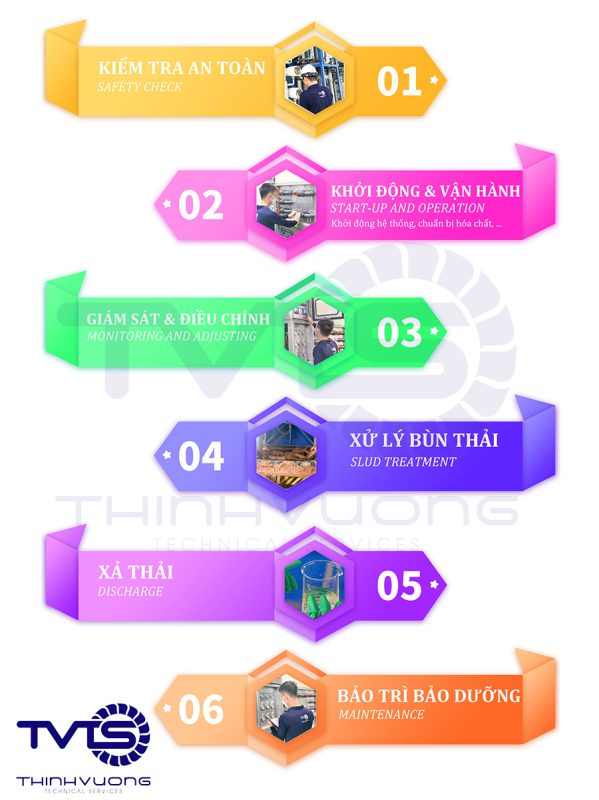
2.1. Check before operation
- Equipment Check: Before starting, all equipment in the treatment system such as pumps, valves, meters, filtration systems, tanks and other mechanical equipment should be checked.
- Wastewater Check: Measure and evaluate the flow, composition and properties of the incoming wastewater to determine the appropriate treatment method.
2.2. System startup
- Equipment start-up: Open the valve, start the pump and related equipment to start the treatment process.
- Parameter adjustment: Control and adjust technical parameters such as water flow, pressure and chemical concentration (if any) to ensure stable system operation.
2.3. Operation of wastewater treatment system
- Mechanical filtration stage: Wastewater is passed through a filtration system to remove large impurities such as trash, sand, and scum.
- Biological treatment stage: Wastewater is treated through a biological tank to remove organic matter through biological oxidation.
- Chemical treatment: If necessary, chemicals can be added to adjust pH or remove specific contaminants.
2.4. Monitoring and adjustment
- Parameter monitoring: Continuously monitor important parameters such as dissolved oxygen concentration (DO), pH, conductivity, COD, BOD, TSS, etc. to have timely adjustment and handling plans.
- System adjustment: If the parameters are found to be unsatisfactory, it is necessary to adjust the system or auxiliary processes.
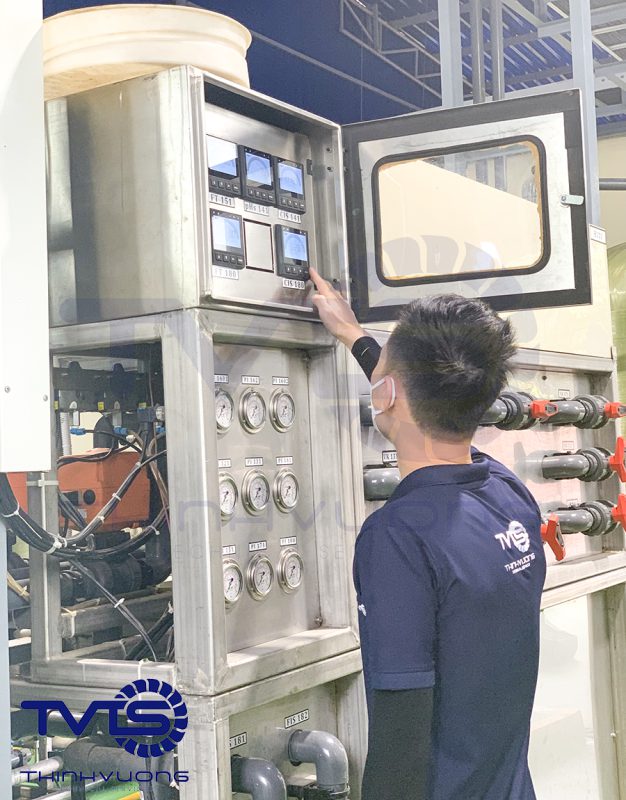
2.5. Sludge treatment
- Sludge collection: Sludge generated from the treatment process needs to be separated, collected and treated.
- Sludge disposal: Sludge can be disposed of by drying or incineration, or using other methods depending on specific regulations and requirements.
2.6. Discharge of treated wastewater
- Wastewater quality testing: Normally, the quality of treated water discharged into the environment is monitored by an automatic water quality monitoring system.
- Water discharge: After testing meets the requirements, the treated wastewater is discharged into rivers, streams or reused if appropriate.
2.7. Maintenance and servicing
- Routine Maintenance: Perform routine maintenance activities such as cleaning the tank, replacing or repairing damaged equipment.
- Electrical System Check: Ensure that the automatic control system and electrical system are always in good working condition.
2.8. Reporting and data storage
- Data Storage: Record technical parameters and reports on operating procedures, incidents (if any) for monitoring and improving efficiency in the future.
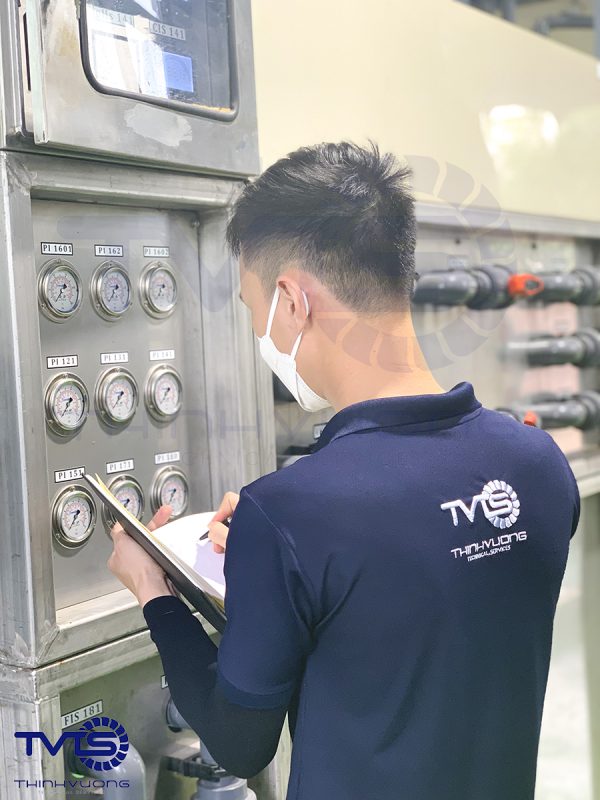
3. Maintenance of wastewater treatment system
This is considered an important task to ensure continuous operation. At the same time, it helps to minimize unexpected incidents and increase the life of the system. In addition, this process also requires very strict safety standards and regulations. Because a small mistake can lead to the entire system temporarily stopping operation.
Below are the main tasks that need to be performed during the maintenance and repair of the wastewater treatment system:
3.1. Check and clean the filter system
- Cleaning the filter tanks: Remove the residue and solids accumulated in the filter tanks, ensuring that the filter system is not clogged.
- Replace the filter material: Filter materials such as sand, gravel or filter membranes need to be replaced periodically to ensure water filtration efficiency.
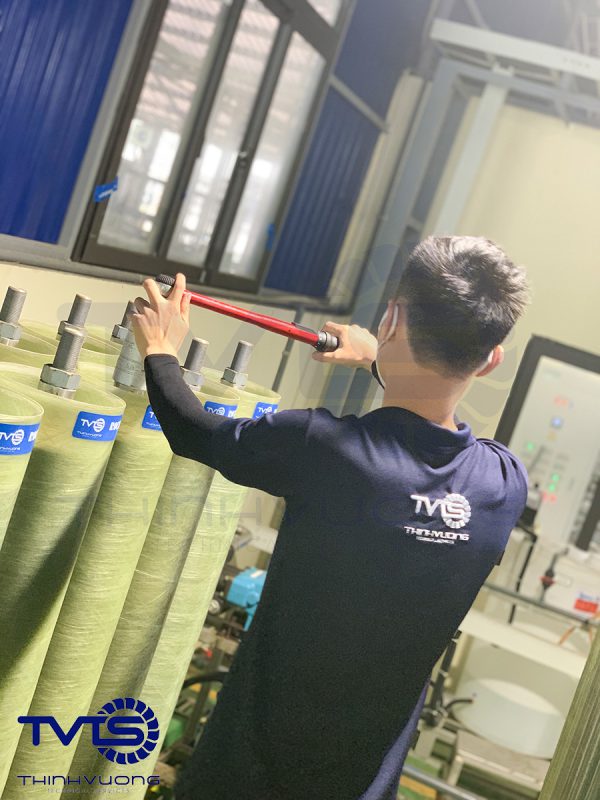
3.2. Pump maintenance
- Check pump operation: Make sure the pump is running smoothly, check the pump flow and pressure.
- Lubrication and regular oil changes: Pump components need to be lubricated regularly and oil changed according to the manufacturer’s instructions to avoid wear.
- Check pipes and valves: Make sure there are no leaks or blockages in the piping system and control valves.
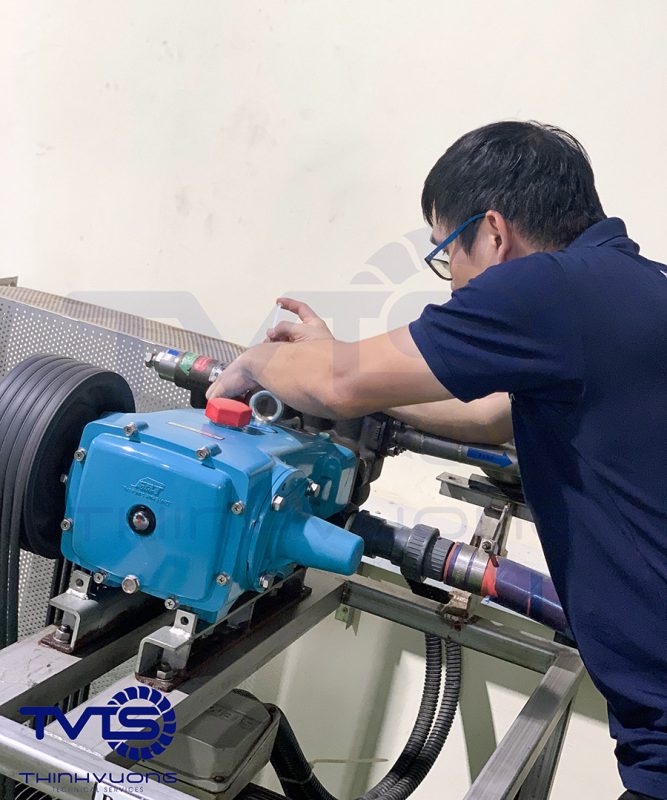
3.3. Check the electrical cabinet system and control electrical system
- Check the control panel: Make sure the automatic control system and sensors are working properly. The work can be done as follows: check the flow sensor, pH, oxygen concentration, etc.
- Check the wiring system: Check the condition of the electrical wires, promptly handle worn, broken or damaged electrical wires that can easily cause fire or power outage.
3.4. Maintenance of tanks and biological treatment tanks
- Tank Cleaning: Remove accumulated scum in settling tanks and wastewater tanks to avoid clogging and reduce treatment efficiency.
- Microorganism testing and replacement: In biological treatment systems, the quality of microorganisms should be tested and supplemented if necessary to ensure effective biological treatment.
3.5. Inspection and maintenance of mechanical equipment
- Fan and Compressor Maintenance: Ensure that fans and compressors provide adequate oxygen for biological treatment processes. Perform regular maintenance and replace damaged parts.
- Check other mechanical equipment: Equipment such as conveyors, motors, and agitators should also be checked, lubricated, and replaced if necessary.
3.6. Check the sludge discharge system
- Sludge tank cleaning: Remove sludge periodically to avoid overflow or excessive accumulation, causing system blockage.
- Check and maintain sludge press, sludge separator
3.7. Check the quality of the output water
- Conduct regular testing: Analyze the quality of treated water to ensure it meets standards before being discharged into the environment. Check indicators such as pH, BOD, COD and heavy metal concentrations.
- Calibrate measuring equipment: regularly calibrate measuring equipment to ensure accurate measurement data
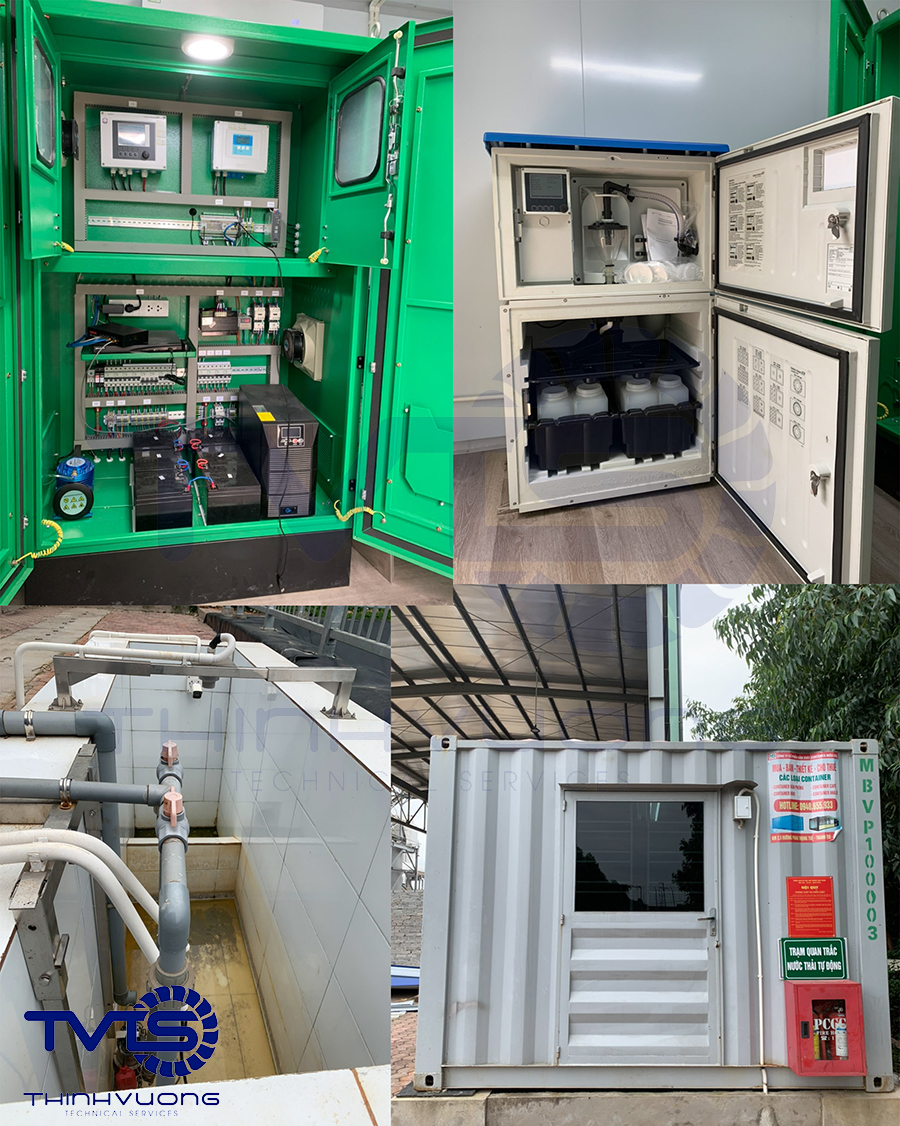
3.8. Lập kế hoạch bảo trì, bảo dưỡng
Create weekly, monthly and yearly plans. Make sure no maintenance work is missed.
Record details of maintenance and repair activities using Record details of maintenance and repair activities using. To easily monitor and evaluate system performance.
3.9. Operating Instructions
Train technical staff to master the procedures. Provide instructions on how to use related equipment and tools proficiently. Documentation is available
Drill and provide instructions on how to handle unexpected incidents. Apply accident prevention measures during operation and maintenance.
4. Experience with incidents when operating wastewater treatment systems
4.1 Some common incident situations are:
- Bulking Sludge (Details)
- Clogging of pumps or water pipes (Details)
- Severe odor in the outlet water (Details)
- Increased excess sludge (Sludge Overproduction) (Details)
- Wastewater after treatment does not meet discharge standards (Details)
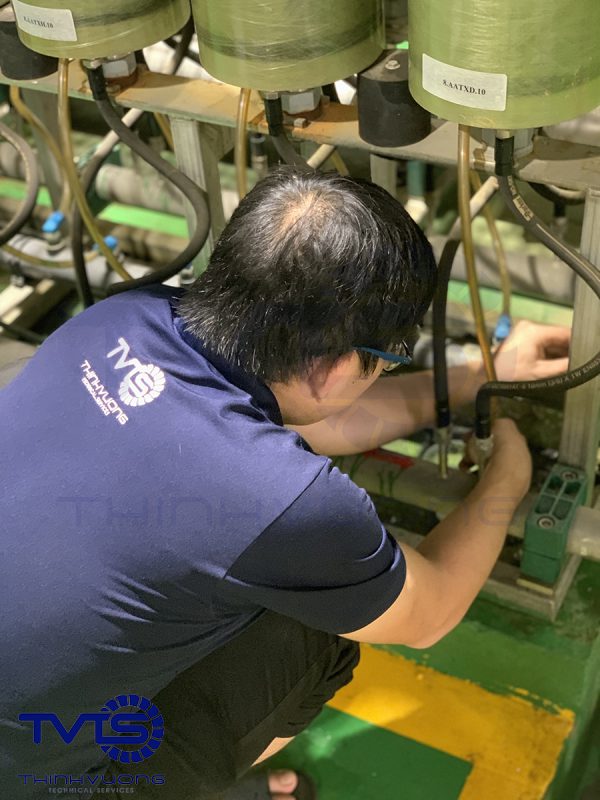
4.2 General troubleshooting guide
- Identify the cause: Find out the exact cause, it may take a few tests to be able to accurately assess from a day of many causes.
- Troubleshooting: Handle it yourself with available capacity or experience. In case you cannot solve it yourself, you can consult with units with higher expertise.



